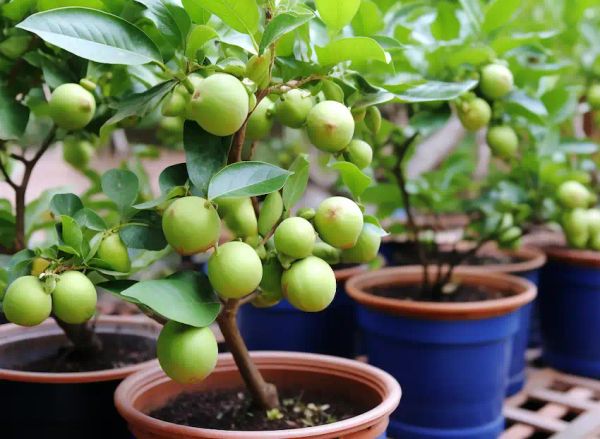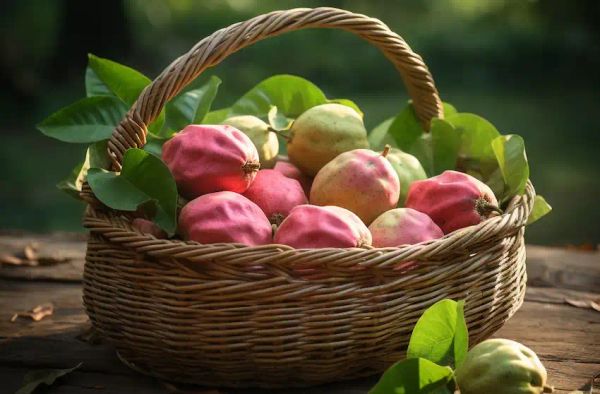
Guava trees (Psidium guajava) are renowned for their delicious fruit and are commonly grown in tropical and subtropical regions. While guava trees are typically propagated from seeds, cuttings, or air layering, growing guava trees from guava leaves can be a fascinating experiment for gardening enthusiasts between the ages of 45 – 65. In this article, we will guide you through the steps of growing guava trees from guava leaves, providing an enjoyable and easy-to-understand approach.
Materials You Will Need:
Before we start, gather the following materials:
- Healthy guava leaves from a mature guava tree
- A clean, sharp knife or scissors
- Rooting hormone (optional)
- A pot with well-draining soil or a seedling tray
- Plastic bags or plastic wrap
- A warm and bright location with indirect sunlight
Step-by-Step Guide:
Let’s dive into the exciting process of growing guava trees from guava leaves:
1. Leaf Selection:
Begin by selecting healthy and mature guava leaves from a flourishing guava tree. Choose leaves that are free from pests and diseases to ensure successful leaf propagation.
2. Leaf Cuttings:
Using a clean, sharp knife or scissors, cut the guava leaves into sections, ensuring each section includes a portion of the main vein. Aim for each cutting to be about 4-6 inches in length. If you have access to multiple healthy leaves, consider taking several cuttings to increase your chances of success.
3. Rooting Hormone (Optional):
While not necessary, using a rooting hormone can boost the chances of successful root development. If you opt to use a rooting hormone, dip the cut end of each leaf cutting into the hormone following the manufacturer’s instructions.
4. Planting:

Plant the prepared leaf cuttings in a pot with well-draining potting mix or soil. You can plant them horizontally, partially burying the cut end in the soil. For better results, plant multiple cuttings in the same pot or tray, spacing them a few inches apart.
5. Enclose in Plastic:
Cover the pot or seedling tray with a clear plastic bag or plastic wrap to create a mini greenhouse effect. This will help maintain humidity around the leaf cuttings, facilitating root development.
6. Provide Adequate Care:
Place the pot or tray in a warm location with bright, indirect sunlight. Ensure the soil remains consistently moist by lightly misting the cuttings or watering as needed. Be cautious not to overwater and avoid waterlogging the soil.
7. Patience:
Root development can take time and may vary from several weeks to several months. Stay patient and continue caring for the cuttings during this period. Keep an eye on the humidity level inside the plastic enclosure, as it should remain relatively high.
8. Transplanting:
Once the leaf cuttings have developed a healthy root system and grown into small plants, they can be transplanted into larger pots or directly into your garden. Provide them with adequate sunlight and water as they continue to grow.
Tips and Considerations:
Here are a few tips and considerations to keep in mind during the process:
- Not all guava leaves will successfully root and grow into new trees using this method. The success rate can vary.
- Some guava varieties may be more suitable for leaf propagation than others. Feel free to experiment to determine the best results.
- Avoid overwatering the leaf cuttings, as excessive moisture can lead to rot.
- Maintain a warm and humid environment for the leaf cuttings during the rooting phase to encourage successful propagation.

In conclusion, growing guava trees from guava leaves can be an exciting and educational gardening project, particularly for individuals between the ages of 45 – 65. Although success is not guaranteed, with patience and proper care, you may experience the joy of growing a guava tree from a leaf cutting. For a higher success rate and more predictable results, many gardeners prefer to propagate guava trees from seeds or cuttings. Nonetheless, this method offers an engaging way to explore the wonders of plant propagation.



